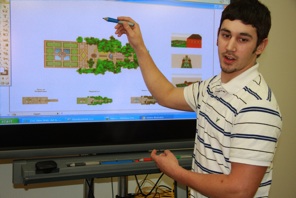Using Web Technologies in the Classroom
 Many of our Communication-Intensive faculty are using web-based technologies to enhance
their courses. These faculty members report that, among other things, the technology
Many of our Communication-Intensive faculty are using web-based technologies to enhance
their courses. These faculty members report that, among other things, the technology
- maximizes class time,
- minimizes workload,
- increases students’ understanding of the course content,
- improves students’ performance in the course,
- can increase student connections between course content and the "real" world,
- enhances students’ communication skills, and
- engages students in the classroom.
Here are some ways LSU C-I faculty are using web technologies to enhance their courses:
- collaborative applications such as Google Drive, Dropbox, and Turnitin to engage real-time peer-to-peer and instructor-student feedback and updates, as well as to track team work progress
- various social media elements to foster student interaction in and out of the classroom, to generate or collect primary sources for course analysis, and to introduce students to professional interactions with scholars in their field
- open-access coding and mapping sites to show students how technology and process can be a part of content creation and to innovate data structure and collection
- public-facing websites such as maker spaces, collaborative news platforms and ressearch lab websites for students to upload artefacts, promote public scholarship and receive feedback from a broader collection of artists and professionals
- Wikipedia writing and editing to increase the stakes for final artefacts and instill understanding of audience to teach strategies for concise communication and for translating technical language into usable information
- project management and communications applications like Asana, Trello and Slack to foster critical understanding of process and project-based communication
- blogs for out-of-class discussions and “questions of the week”
- blogs to efficiently cover a variety of readings; each student is assigned a specific reading/chapter and posts an insightful blog entry on the reading to educate fellow class members
- blogs and wikis to upload additional course content that enhances textbooks; also used to add more timely information when texts may be outdated
- website template applications to draft websites and/or student portfolios (formal web development software is encouraged for final and formal websites or portfolios)
If you have some other ideas, please share them with us, and we’ll share with the LSU community! How are you using web tools in your class? Email cxc@lsu.edu.